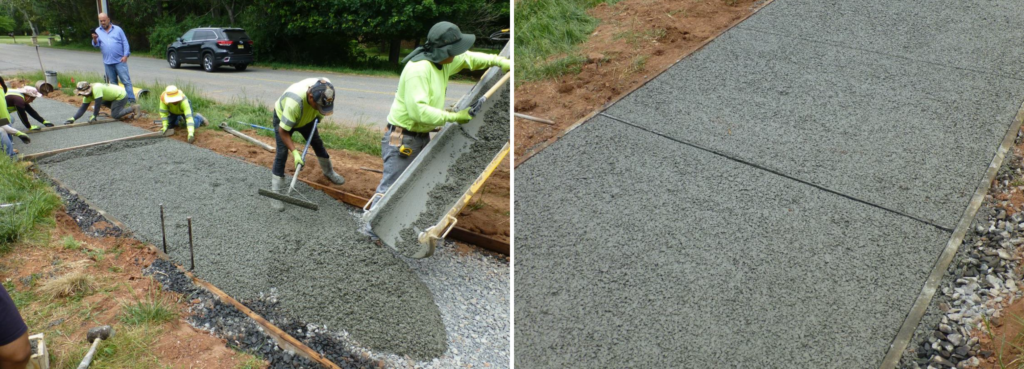Pervious (or porous) concrete has been gaining popularity as a potential solution to reduce the amount of impermeable surfaces associated with sidewalks, reduce puddling, and potentially slow storm water surface runoff. As important as these benefits are to surface runoff mitigation, there are concerns with the ability of pervious concrete to provide sufficient structural support and longevity for the expected service life of the sidewalks as well as its life cycle costs. The composition of pervious concrete creates limitations to its mechanical strength and challenges in its maintenance to achieve the expected service life.NJDOT Research
The performance of pervious concrete in sidewalks is relevant to its geographical location, subsurface conditions, and intended application. There is a need to collect information on construction practices and performance data of porous sidewalks. To collect data, a porous concrete sidewalk was constructed and monitored. The sidewalk is part of the Skillman Road Pathway project in Montgomery Township. The Skillman Road Pathway project was a good candidate because of its location, ease of access, intended use, and timeline. The sidewalk was 4 in thick constructed on top of 10 in storage (reservoir) layer made of No. 57 stone with 40% voids. The sidewalk is about 200 ft long and 6 ft wide (approximately 1,200 ft2). Monitoring the sidewalk included visual inspection of surface texture for raveling or clogging; periodic infiltration tests to measure variation of infiltration rates over time.
The research team prepared several mix designs in the lab with and without sand and worked with the supplier to adjust these mixes and select two mixes for field application. Observation from this project showed the supplier, contractor and the field crew need to have prior experience in placement and finishing of porous concrete, as well as the operator of the ready mix truck and supervising field personnel. Constructing a near test slab nearby the site prior to constructing the sidewalk can be beneficial for placement and finishing and is recommended. It also can be used to take cores and select the desired water pressure for pressure washing when needed.
Visual inspection showed air blowers can keep the sidewalk free of debris if done frequently but vacuuming with suction twice per year is more effective and can keep the porous concrete sidewalk free of debris and minimize clogging. If clogging occurs, pressure washing should be used to clean the sidewalk. Water pressure of 2000 psi is sufficient to clean minor clogging and 3000 psi to 3500 psi is sufficient to clean moderately to severely clogged locations. Higher water pressure could damage the surface and cause raveling.
A LCCA tool was developed based on MS Excel platform consisting of multiple excel worksheets including main input, secondary input, calculations, and results. The worksheets provide a friendly interactive interface for users and also maintain the flexibilities for advanced users to alter embedded functions and update secondary inputs. The LCCA tool combines hydrologic design and the life cycle cost analysis of porous concrete pavements.
Posted in Uncategorized.

